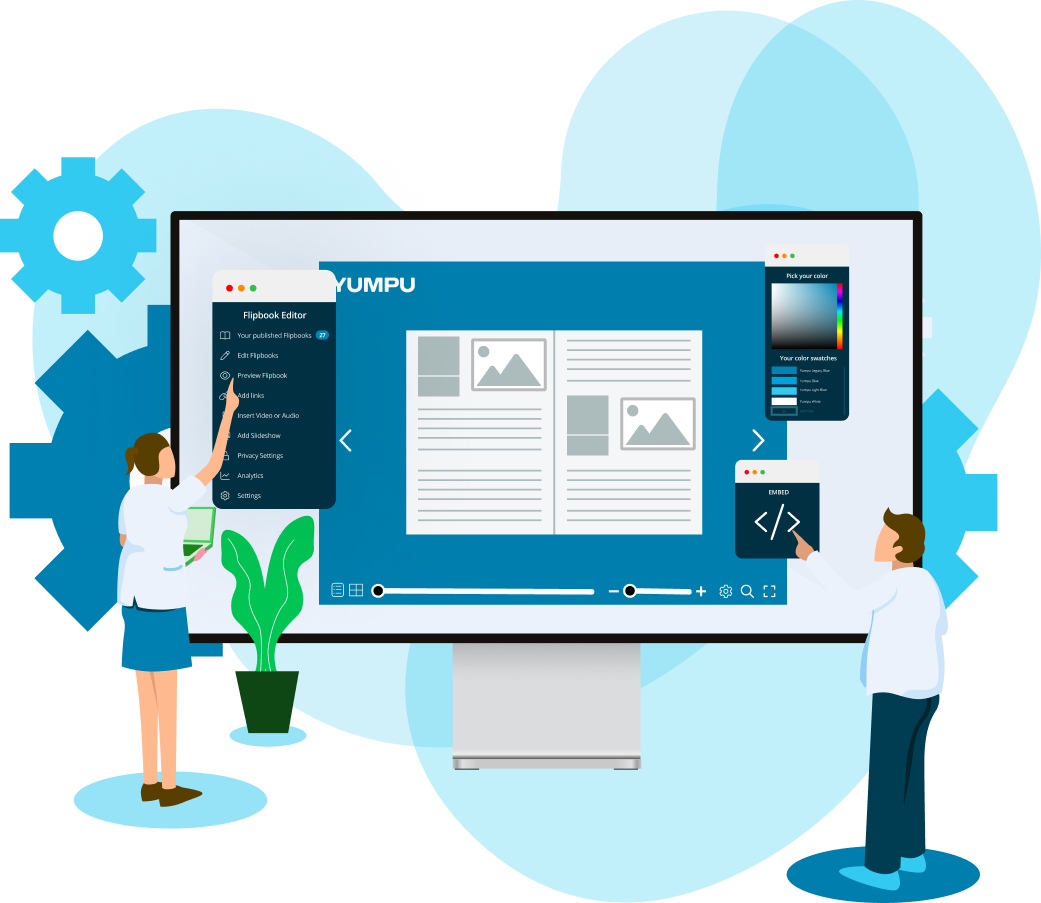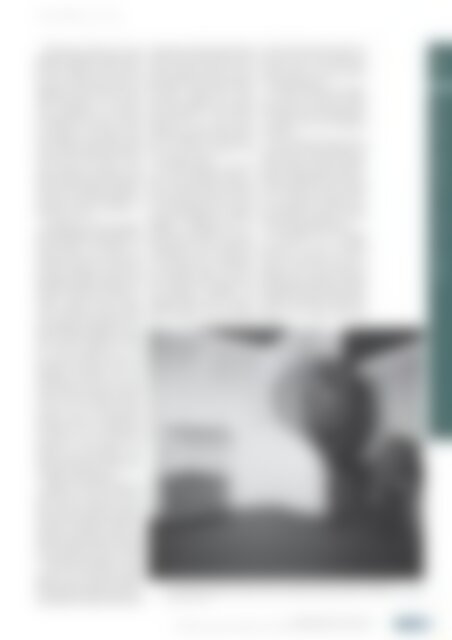atw - International Journal for Nuclear Power | 04.2019
Create successful ePaper yourself
Turn your PDF publications into a flip-book with our unique Google optimized e-Paper software.
<strong>atw</strong> Vol. 64 (2019) | Issue 4 ı April<br />
Today, one can only try to sympathize<br />
with Meitner’s feelings, which<br />
probably oscillated between frustration<br />
and excitement. Her entire life<br />
had been turned upside down and<br />
apparently, she had missed the most<br />
important discovery of her <strong>for</strong>mer<br />
team. Additionally, this discovery<br />
would question her own work about<br />
the transuranic elements too. Hahn<br />
and Meitner did correspond about<br />
their feelings in their letters. Hahn<br />
wrote, “How beautiful and exciting it<br />
would be if we could have done this<br />
work together like be<strong>for</strong>e.” From<br />
Meitner’s reply, he could read the fear<br />
that her participation in the discovery<br />
could not be adequately approved.<br />
And Hahn replied immediately: “It<br />
shocked me to see you so depressed.”<br />
[15 a), pp 171, 177]<br />
On January 6 th , 1939, the results of<br />
Hahn and Straßmann were published.<br />
The interpretation culminated in the<br />
famous phrase: “As chemists, we<br />
should actually call the new nuclei not<br />
radium but barium.” [18] And the<br />
next major publication by Hahn and<br />
Straßmann followed February 10 th ,<br />
1939. [19] The authors reported with<br />
absolute certainty that all the previously<br />
suspected radium isotopes<br />
were in truth barium isotopes. Hahn<br />
and Straßmann apparently tried to<br />
show that there was indeed a group of<br />
three that had obtained the results.<br />
The previous publications of the<br />
trio and Lise Meitner’s name were<br />
mentioned several times. Hahn and<br />
Straßmann mentioned the transuranic<br />
elements as well: “We are still<br />
certain, that the transuranic elements<br />
remain.” The second fission product<br />
was stated to be a noble gas, either<br />
krypton or xenon. The publication<br />
concluded with the statement that<br />
the finding of the new irradiation<br />
products was “only possible by the<br />
experience we have gained in the<br />
earlier, systematic experiments on the<br />
trans uranic elements, carried out in<br />
asso ciation with L. Meitner.”<br />
Meitner and Frisch published their<br />
conclusions in Nature in February<br />
1939. [20] They predicted the other<br />
fission product correctly as krypton.<br />
This work also explicitly stressed the<br />
existence of transuranic elements. In<br />
subsequent publications, Frisch and<br />
Meitner already provided calculations<br />
of the enormous amount of energy<br />
released during the reaction. [21, 22]<br />
After those publications, various<br />
groups all over the world instantly<br />
began to repeat, confirm and continue<br />
the experiments. Frédéric Joliot-Curie<br />
realized that the fission reaction led to<br />
the emersion of free neutrons. These<br />
could lead to the subsequent fission of<br />
further uranium atoms and a selfmaintaining<br />
chain reaction was thinkable.<br />
[23] Soon the whole world was<br />
interested in nuclear fission. Frisch<br />
and Bohr explained the energy<br />
released during the reaction with Einstein’s<br />
equation E = mc 2 . [24] The<br />
fragments of the nuclear fission<br />
reaction combined had a smaller mass<br />
than the uranium core. The equivalent<br />
of this mass difference was<br />
released as free energy.<br />
The different isotopes of uranium<br />
have been extensively studied. As<br />
early as 1939, Niels Bohr recognized<br />
that the fission process only occurs<br />
in the rare uranium isotope 235 U. [25]<br />
In the following year, the American<br />
group led by McMillan and Abelson<br />
published confirmation that, by<br />
irradiation of uranium-238, a transuranic<br />
element could be produced.<br />
Investigations of these elements led<br />
to nothing less than a reorganization<br />
of the periodic table. [26] Below<br />
the lanthanides follows a series of<br />
elements later called actinides. Hahn<br />
and Straßmann confirmed and<br />
supple mented the results. They provisionally<br />
named the new element<br />
block “uranides”. [27] Otto Hahn<br />
was later kind of annoyed about the<br />
fact that he did not recognize one<br />
uranium isotope with the half-life<br />
of 23 minutes as a precursor of the<br />
transuranic element 93.<br />
Later [28], Seaborg and McMillan<br />
also found the heaviest natural<br />
element with an atomic number of 94.<br />
It emerged from the bombardment<br />
of uranium atoms with deuterium<br />
nuclei. [29]<br />
The transuranic elements 93 and<br />
94 were later called neptunium and<br />
plutonium in the order of the planets<br />
Uranus, Neptune, and Pluto. [30] Plutonium<br />
is considered the heaviest naturally<br />
occurring element. It was found<br />
in trace amounts in natural uranium<br />
ore. The naturally occurring transuranic<br />
elements are just like the ones<br />
in the laboratory created via neutron<br />
capture by uranium-238 atoms.<br />
During World War II, Otto Hahn<br />
was a member of the “Uranium<br />
Association,” a group of scientists<br />
who were supposed to work on the<br />
technical use of nuclear fission in<br />
Germany. Due to this fact, the British<br />
held him captive after the war. During<br />
his captivity, he learned of the nuclear<br />
explosions in Japan by the Americans<br />
and of the fact that he had been<br />
awarded the Nobel Prize <strong>for</strong><br />
| | In 1972 the chemistry exhibition in the Deutsches Museum was reopened presenting the “Arbeitstisch von Otto Hahn”<br />
in a niche next to a large model of an uranium atom. After more than 20 years on display, Lise Meitner’s contribution to the discovery<br />
was still not mentioned.<br />
ENERGY POLICY, ECONOMY AND LAW 205<br />
Energy Policy, Economy and Law<br />
The <strong>Nuclear</strong> Fission Table in the Deutsches Museum: A Fundamental Discovery on Display ı Susanne Rehn-Taube

















